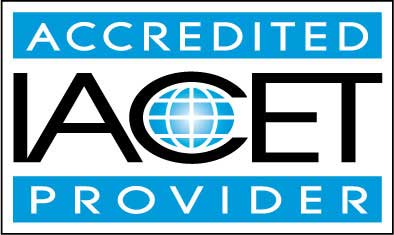Course Description
Have you ever wondered how life on Earth weaves together into an intricate, beautiful, yet fragile tapestry? Every living organism, every ecosystem, every natural process is part of a profound story-one that shapes not just our environment, but the very future of humanity. If you're ready to move beyond curiosity and become part of the solution to today's most pressing environmental challenges, this course is your gateway.
Our world is changing at an unprecedented pace. Ecosystems are under strain, biodiversity is in peril, and the balance that sustains life is shifting. But within these challenges lies an incredible opportunity-the chance to understand, protect, and even restore the delicate systems that make life on Earth possible. That's what ecology is all about: understanding the connections, deciphering the patterns, and taking action. This course will empower you with the knowledge and skills to make that difference.
Unlike traditional science courses, this isn't about memorizing facts or passively learning theories. It's about immersing yourself in the fascinating story of life on Earth. You'll delve into the dynamic relationships between species, explore how ecosystems function, and uncover the powerful forces that have shaped life over millions of years. From the smallest microbe to the largest mammal, every element has a role-and you'll learn how to uncover those connections and apply that understanding in meaningful ways.
But this course goes further. It's not just about gaining knowledge; it's about transforming how you see the world. You'll explore groundbreaking topics like evolutionary ecology, biogeography, and systems ecology, gaining insights into the processes that govern our planet. You'll discover how cutting-edge tools like Geographic Information Systems (GIS) are revolutionizing our ability to map and protect biodiversity. And you'll walk away with practical skills for managing natural resources, combating biodiversity loss, and driving sustainable solutions.
Whether you're an aspiring environmental scientist, a passionate advocate for sustainability, or simply someone who wants to make a real impact, this course is your springboard. It's designed to inspire, challenge, and equip you to think critically and act decisively in a world that needs knowledgeable, compassionate stewards now more than ever.
This is more than a class-it's a call to action. Are you ready to explore, understand, and safeguard the Earth's most precious systems? The time to act is now. Join us, and be the change our planet so urgently needs.
- Completely Online
- Self-Paced
- 6 Months to Complete
- 24/7 Availability
- Start Anytime
- PC & Mac Compatible
- Android & iOS Friendly
- Accredited CEUs

Learning Outcomes
- Define the concept of ecology as the scientific study of interactions among organisms and their environments, distinguishing it from environmentalism as an advocacy movement.
- Describe the historical evolution of ecological thought, identifying key figures and contributions that have shaped modern ecological studies and their impact on environmental policy.
- Define abiotic and biotic factors in an ecosystem and provide examples of each within different environmental contexts.
- Identify at least three human activities that impact ecological balance and explain their effects on ecosystems.
- Analyze the impact of environmental changes on speciation by illustrating different forms of speciation like allopatric and sympatric through real-world examples.
- Define the concept of natural selection and describe its role in the evolution of species by analyzing examples such as Galápagos finches and peppered moths.
- Identify and explain the life history strategies of organisms by comparing r-strategy and K-strategy examples, such as sea turtles and elephants.
- Define the concept of ecotypes and describe their role in species adaptation to local habitats, using examples to illustrate genetic variation and conservation importance.
- Identify and analyze examples of polymorphism and industrial melanism in various species, evaluating rapid evolutionary changes in response to environmental pressures.
- Describe the different types of symbiotic relationships in ecosystems, including mutualism, commensalism, and parasitism, through real-world examples.
- Identify and analyze adaptive strategies in predator-prey dynamics and their impact on population balance and ecosystem health.
- Define the three levels of biodiversity: ecosystem diversity, species diversity, and genetic diversity, and provide examples of each within a given ecosystem.
- Describe the impact of human activities on biodiversity, including habitat destruction, climate change, pollution, overexploitation, and invasive species, and propose conservation strategies to mitigate these effects.
- Demonstrate mastery of lesson content at levels of 70% or higher.
Assessment Guide
| Assessment | Points |
|---|---|
| An Introduction | 1 points |
| Lesson 1 Exam | 10 points |
| Lesson 2 Exam | 10 points |
| Lesson 3 Activity | 1 points |
| Lesson 3 Exam | 9 points |
| Lesson 4 Activity | 1 points |
| Lesson 4 Exam | 10 points |
| Lesson 5 Exam | 10 points |
| Lesson 6 Activity | 1 points |
| Lesson 6 Exam | 10 points |
| Lesson 7 Activity | 1 points |
| Lesson 7 Exam | 10 points |
| Lesson 8 Activity | 1 points |
| Lesson 8 Exam | 10 points |
| Lesson 9 Exam | 10 points |
| Lesson 10 Exam | 10 points |
| Lesson 11 Activity | 1 points |
| Lesson 11 Exam | 10 points |
| Lesson 12 Exam | 9 points |
| Lesson 13 Exam | 9 points |
| Lesson 14 Exam | 10 points |
| Lesson 15 Exam | 10 points |
| Lesson 16 Exam | 10 points |
| Lesson 17 Exam | 10 points |
| Lesson 18 Exam | 10 points |
| Lesson 19 Exam | 10 points |
| Lesson 20 Exam | 9 points |
| The Final Exam | 95 points |


